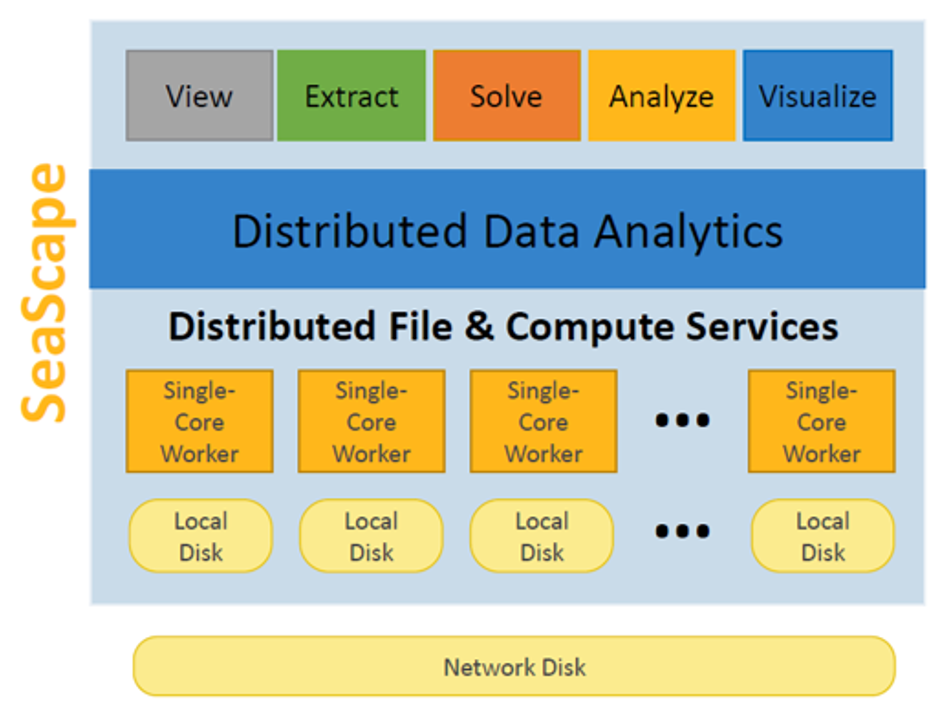For the past few decades, System-on-Chip (SoC) has been the gold standard for optimizing the performance and cost of electronic systems. Pulling together practically all of a smartphone’s digital and analog capabilities into a monolithic chip, the mobile application processor serves as a near-perfect example of an SoC. But today’s leading integrated circuits (IC) are pushing up against the upper limit of a chip’s physical size, which is limited by the manufacturing equipment’s optical reticle size. This has proven difficult to increase and has grown only slowly over the years. Yet market pressure continues unabated for bigger, more capable electronic systems with more integrated memory, more digital logic, and more analog/mixed signal circuitry. This tension is driving some significant business and technology trends in EDA that will reshape the market in the coming years.

The Four Engines Driving Semiconductor Design
The road forward has plenty of challenges and we are seeing design companies making significant efforts to adapt and come to grips with the following four technology and market drivers:
- The requirement for concurrent multiphysics analysis to ensure reliable and efficient electronic systems
- The blurring of the lines between chip, package, and system
- The need for open, extensible, and inclusive platforms that interoperate with the full range of tools required to solve today’s multiphysics designs
- Bespoke silicon as the major driver for EDA at hyperscalers and system companies
Blurring of Silicon and System Design
The advent of 3D-IC opens up new horizons for solutions that can be implemented in silicon. But it also forces a closer integration between three distinct technology markets that have co-existed symbiotically for many decades: IC design, package design, and printed circuit board (PCB) design. These markets use different tools, different data formats, different manufacturing back-ends, operate at different computational and geometric scales, and focus on different physical concerns. Yet, emerging 2.5D/3D-IC technology combines many aspects of all three: It features heterogeneous silicon die but also board-like substrates and interposers that stitch the chips together. The collapse of all this expertise into a single project is requiring companies to re-imagine their design capabilities and flows, as well as their organizational structure.
Open, Extensible, Multiphysics Platforms
The siloed isolation of chip design from PCB design and package design means that each of these markets has developed insular data structures that are ill-suited to deal with the breadth of multiphysics analysis for 3D-IC design. Many different physical disciplines – including computational fluid dynamics, mechanical stress, and electromagnetic radiation – are all needed to solve the multiphysics challenge. No one company offers the entire range of required tools, so we see the need for open multiphysics platforms that allow easy data exchange and tool integration. A crucial factor for advanced users is the ability to customize their design flow around these platforms with popular extension languages like Python. And, finally, there is the issue of tool capacity to handle the enormous size of modern silicon systems. EDA platforms must embrace the modern cloud compute paradigm that enable realistic analysis in a time of relevance.
Bespoke Chips
Today’s market-leading companies are heavily dependent on technology for their continued success and market differentiation. Silicon systems are now so powerful and central that their performance can shift the needle for entire business divisions. Everybody from online retailers to telecommunications to social networking companies and hyperscalers are moving away from off-the-shelf solutions and turning to custom-built silicon to give them an edge. Many of these companies are seeking to gain market share by leveraging proprietary AI/ML algorithms trained on their extensive troves of market data – but this requires yet greater amounts of compute power and specialized chips. Access to high-quality silicon solutions is vital in today’s world and there is strong demand for continually more complex and powerful electronics.
3D-IC an Inflection Point in Electronic Design
3D-IC design is recognized as an inflection point in electronic design and presents major challenges that are realigning the electronic design industry around this new reality.
The key technology breakthrough of 3D-IC is that it makes it possible to spread a system out over multiple chips – moving the industry away from the traditional monolithic SoC approach. By abandoning the need to integrate an entire system on a single SoC and instead allowing it to be disaggregated over multiple chips, 3D-IC enables Moore’s Law to break through the reticle size barrier, improves yield by shrinking the size of individual chips, and makes it possible to mix different process technologies optimized for each function.
Summary
The four trends outlined above are deeply interconnected and mutually reinforcing. We believe that they give a perspective for EDA innovation over the coming years and show a path forward for all stake holders in the electronic design market to align their development priorities to take advantage of the incredible technical opportunities that are available to us.
About John Lee
John Lee is general manager and vice president of the Ansys Electronics and Semiconductor Business Unit. Lee co-founded and served as CEO of Gear Design Solutions (now Ansys), developer of the first purpose-built big data platform for integrated circuit design. He cofounded two other startups (Mojave Design and Performance Signal Integrity), which successfully exited into companies now part of Synopsys. He holds undergraduate and graduate degrees from Carnegie Mellon University.
Also Read:
Unlock first-time-right complex photonic integrated circuits
Take a Leap of Certainty at DAC 2022
Bespoke Silicon is Coming, Absolutely!
Share this post via:





Comments
There are no comments yet.
You must register or log in to view/post comments.